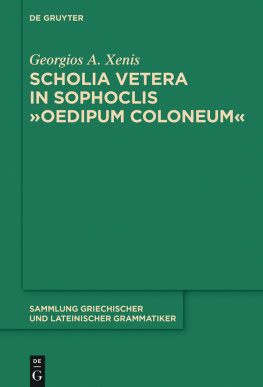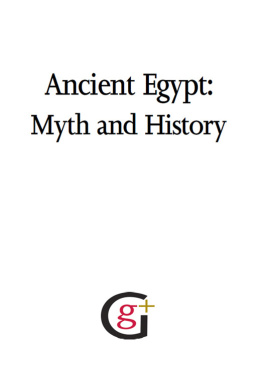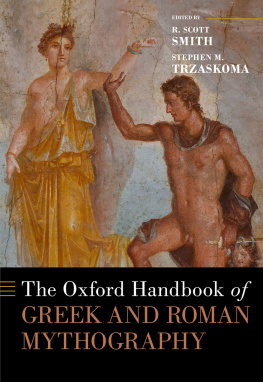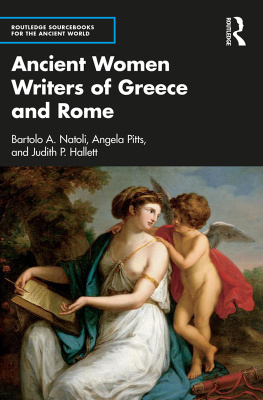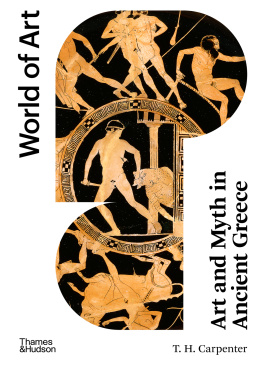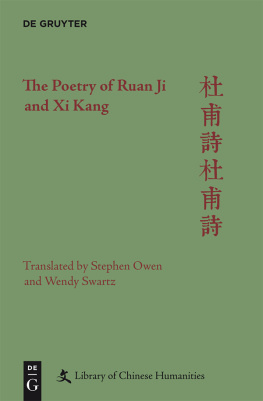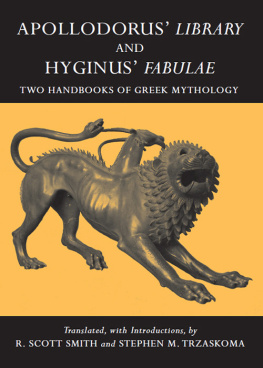Guide

Apollodoriana
Sozomena

Studies in the Recovery of Ancient Texts
Edited
on behalf of the Herculaneum Society
by
Alessandro Barchiesi, Robert Fowler, Dirk Obbink and Nigel Wilson
Volume 16

ISBN 978-3-11-054074-1
e-ISBN (PDF) 978-3-11-054532-6
e-ISBN (EPUB) 978-3-11-054430-5
ISSN 1869-6368
Library of Congress Cataloging-in-Publication Data
A CIP catalog record for this book has been applied for at the Library of Congress.
Bibliographic information published by the Deutsche Nationalbibliothek
The Deutsche Nationalbibliothek lists this publication in the Deutsche Nationalbibliografie; detailed bibliographic data are available on the Internet at http://dnb.dnb.de.
2017 Walter de Gruyter Inc., Berlin/Boston
www.degruyter.com
Jordi Pmias
1Preface: Apollodorus: Cutting through Mythography

Jordi Pmias , Universitat Autnoma de Barcelona
The origins of this volume lay in the colloquium Apollodoriana. Antics mites, noves crulles held at the Universitat Autnoma de Barcelona on the 25th and 26th of April 2013.
In the burgeoning scholarly field of Greek mythology, a leading trend is now mythography.
This manual has served as the primary model for many modern collections of Greek myths and as a source for the study of ancient mythology. Thanks to its totalizing character, with its endless accumulation of mythical characters and references to now missing sources, the Bibliotheca invites consultation on particular matters. As Delattre proves in his chapter, already in Antiquity the Bibliotheca encouraged a particular reading: namely, one that aims for the reader to acquire information and it does not necessarily entail a continuous act of reading.
This approach, however, shall not obscure its coherent character and internal logic. In its genealogical arrangement by broad mythical families, the Bibliotheca echoes the Hesiodic Catalogue of Women , often considered its main structural source.
However, outlining and describing the target audience for this particular manual is not an easy undertaking, as the contributions by Edmunds and Fowler show. Different levels of readership may be envisaged. On the one hand, one cannot hardly disagree with Cuartero, when he labels the Bibliotheca as a discurs vulgaritzador. Indeed, it can be seen as a work of popularization that provides the mainstream reading public with basic information about the Greek myths. An excellent example of this standpoint is Bernabs contribution on the Orphic mythology in the Bibliotheca . Apollodorus compiles a number of traditions into a unitary tale a sort of least common multiple of the features contained in the oldest sources.
On the other hand, the unique details and variants found in the Bibliotheca , as well as the great number of authors and the frequency of their citation, show that the author wanted to reach an elite readership having aspirations to sophistication (Fowler). a mechanical process of aggregation of information, but could reveal instead a certain level of elaboration and selection of data in the composition of the work.
Unsurprisingly, a concern that can be recognized in a number of the individual contributions gathered in this volume is the implied readership of the Bibliotheca . Indeed, in the modern study of myth, a common trend is reception. And in this case reception starts with the intended audience of the manual. The active participation of readers in the construction of significance has serious consequences for the understanding of ancient texts. If the reader contributes to the construction of meaning, interpretation will emanate not solely from the original meaning but also from new readers in new contexts.
In contrast with interest in reception, the focus seems to move slightly away from the critical scrutiny of sources, which has long been a crucial topic in Apollodorean scholarship. Individual contributions dealing with the relationship of the Bibliotheca with previous or contemporary texts (Torres, Villagra, Pags) address the issue from others points of view. What now matters is not only to identify the sources used by Apollodorus, but rather to untangle the particular ways in which the author of the handbook makes use of the amount of data available to him and how he combines the disparate mythographical traditions. Catchwords as hypotext or intertextuality are brought to the fore. The methodological difficulties of correlating a unitary text (Apollodorus) to a reconstructed work like the Mythographus Homericus (Pags) or to a collection of fragments (Villagra: comparing a text to a textual artifact) are highlighted.
A number of chapters of this volume come to grips with particular mythical episodes (Pellizers Typhoeus: a mythme ) and their place within the history of ideas. In some cases, connections of the Apollodorean accounts with the mythical and religious system of Greece are investigated, as Prtulas does on Tyndareus resurrection. In other cases, the Apollodorean mythical narratives can be used
At this point, I wish to express my gratitude to the participants to the conference, who have been willing to contribute their articles to this volume. I am grateful also to the colleagues who have written a supplementary chapter. Especial thanks go to Bob Fowler, who has been closely following the editorial process from the very beginning, as well as to the de Gruyter team, including Serena Pirrotta, Marco Acquafredda, and Lena Ebert.
Bibliography
Acerbo, Stefano. I racconti mitici della Biblioteca : polivalenza delle immagini nella mitografia di et imperiale , Diss. Universit di Pisa, 2016.
Alganza, Minerva. Review of Cuartero (2010). FlorIlib 22 (2011), 325328.
Brodersen, Kai. Apollodoros: Gtter und Helden der Griechen. Griechisch und deutsch. Herausgegeben und bersetzt von Kai Brodersen (Darmstadt: Edition Antike, 2004).
Cameron, Alan. Greek Mythography in the Roman World (Oxford: University Press, 2004).
Carrire, Jean-Claude & Massonie, Bertrand. La Bibliothque dApollodore . Traduite, annote et commente (Paris: Les Belles Lettres, 1991).
Cuartero, Francesc J. Pseudo-Apollodor. Biblioteca . Vol. 1 [Llibre primer] (Barcelona: Fundaci Bernat Metge, 2010).
Cuartero, Francesc J. Pseudo-Apollodor. Biblioteca . Vol. 2 [Llibre segon] (Barcelona: Fundaci Bernat Metge, 2012).
Drger, Paul. Apollodor. Bibliotheke. Gtter- und Heldensagen (Dsseldorf: Artemis & Winkler, 2005).
Edmunds, Lowell (ed.). Approaches to Greek Myth . Second Edition (Baltimore: Johns Hopkins University Press, 2014).
Fletcher, Richard. Or such as Ovids Metamorphoses , in: The Hesiodic Catalogue of Women. Constructions and Reconstructions , edited by Richard L. Hunter (Cambridge: University Press, 2005), 299319.
Fornaro, Sotera. I Greci senza lumi. Lantropologia della Grecia antica in Christian Gottlob Heyne (17291812) e nel suo tempo. Nachrichten der Akademie der Wissenschaften in Gttingen. Philologisch-Historische Klasse 5 (2004), 109195.
Fowler, Robert L. Early Greek Mythography I. Texts (Oxford: University Press).
Fowler, Robert L. Early Greek Mythography II. Commentary (Oxford: University Press).



